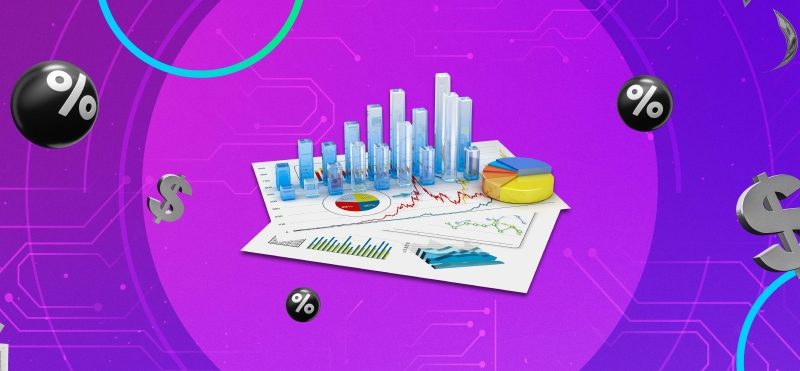Running a successful business requires more than just having a great product or service. One of the most critical aspects of any business is managing its finances effectively.
For many entrepreneurs and small business owners, understanding financial jargon can be overwhelming and confusing. However, one term that is crucial to grasp is gross revenue. Gross revenue is the total amount of money a business earns before any expenses are deducted. In other words, it represents the total sales generated by a company.
As a beginner in business finances, it’s essential to understand the concept of gross revenue and how it impacts your business’s bottom line. In this guide, we’ll break down everything you need to know about gross revenue, including how to calculate it, why it matters, and how to use it to make informed business decisions. So, whether you’re just starting your entrepreneurial journey or looking to improve your financial management skills, take this opportunity to dive into gross revenue.
What is gross revenue?
Gross revenue is the total amount of money a business generates from its products or services before any expenses are deducted. It’s the top line of a company’s income statement, which includes all revenue streams, such as sales, services, and any other income sources.
Gross revenue is different from net revenue, which is the total amount of money a business earns after deducting expenses, such as cost of goods sold, operating expenses, taxes, and other deductions. Gross revenue is the total amount of money that a business earns from its customers, while net revenue is the amount of money that a business keeps after deducting its expenses.
Gross revenue vs. net revenue
Gross revenue and net revenue are two essential financial metrics that every business owner should understand. While gross revenue represents the total sales generated by a company, net revenue is the amount of money a business earns after deducting expenses. Net revenue is also known as the bottom line, as it represents the company’s profit or loss.
To calculate net revenue, a business needs to deduct expenses such as COGS, taxes, operating expenses, and any other deductions from its gross revenue.This calculation provides an accurate picture of a company’s profitability and financial health.
It’s important to note that while gross revenue is a crucial metric, it doesn’t provide a complete picture of a company’s financial health. A business can have high gross revenue but still be unprofitable if its expenses are too high. Therefore, it’s essential to keep track of both gross revenue and net revenue to make informed business decisions.
Why gross revenue matters
Gross revenue is an essential metric for any business as it represents the total sales generated by the company. It’s the starting point for calculating other important financial metrics such as net revenue, gross profit, and gross margin. Gross revenue is also used to measure a company’s growth and performance over time.
By tracking gross revenue, businesses can identify trends in their sales and adjust their strategies accordingly. For example, if a company’s gross revenue is declining, it may need to change its marketing strategies or adjust its pricing to attract more customers. On the other hand, if a company’s gross revenue is increasing, it may need to invest in new products or services to meet the growing demand.
Gross revenue is also a crucial metric for investors and lenders as it provides insight into a company’s financial performance. Investors use gross revenue to evaluate a company’s growth potential, while lenders use it to determine a company’s creditworthiness.
How to calculate gross revenue
Calculating gross revenue is a relatively simple process. To calculate gross revenue, you need to multiply the total number of products or services sold by the price of each item. For example, if a company sells 100 products for $10 each, its gross revenue would be $1,000.
The formula for calculating gross revenue is:
Gross Revenue = Total Number of Products Sold x Price per Item
It’s important to note that gross revenue only includes revenue generated from the sale of products or services. It doesn’t include any additional income sources such as interest, investments, or rental income.
Understanding gross revenue in different business models
Gross revenue can be calculated differently depending on the type of business model. For example, a service-based business may calculate its gross revenue based on the total number of hours worked or projects completed, while a retail business may calculate its gross revenue based on the total number of products sold.
In the case of a subscription-based business model, gross revenue can be calculated based on the total number of subscribers and the monthly subscription fee. For example, if a company has 1,000 subscribers paying $10 per month, its monthly gross revenue would be $10,000.
It’s important to understand how gross revenue is calculated in your specific business model to ensure you’re accurately tracking your sales and financial performance.
How gross revenue impacts business decisions
Gross revenue is a crucial metric that impacts many business decisions, such as pricing strategies, marketing strategies, and product development. By tracking gross revenue, businesses can identify trends in their sales and make informed decisions to improve their financial performance.
For example, if a company’s gross revenue is declining, it may need to adjust its pricing strategy to remain competitive. Similarly, if a company’s gross revenue is stagnant, it may need to invest in new marketing strategies to attract more customers.
Gross revenue also impacts product development decisions. By understanding which products or services generate the most revenue, businesses can focus their resources on developing and improving those products to maximize their profitability.
Common mistakes to avoid when calculating gross revenue
Calculating gross revenue is a simple process, but there are some common mistakes that businesses should avoid:
1) Not including all revenue streams in the calculation. Gross revenue should include all revenue sources, such as sales, services, and any other sources of income.
2) Not deducting returns or refunds from gross revenue. Returns and refunds should be deducted from gross revenue to provide an accurate picture of a company’s sales.
3) Using incorrect pricing information when calculating gross revenue. This includes factoring in any discounts, promotions, or coupons that were applied to the sale.
Tools and resources to help manage gross revenue
There are many tools and resources available to help businesses manage their gross revenue effectively. Accounting software such as QuickBooks, Xero, and FreshBooks can help businesses track their sales, expenses, and profits. However, it’s quite difficult to manage all your sales channels and payment platforms correctly without the help of other tools.
Automated analytics software such as Synder Business Insights can be an invaluable tool for businesses. This thorough analytics solution links all sales and payment platforms and generates customizable KPI reports, covering sales, product, and customer performance. These reports are presented on a single dashboard, providing instant access to critical data, such as gross revenue reports, highlighting earnings from specific sales channels and time periods. With Synder, businesses gain access to real-time data-based insights to identify growth opportunities, streamline decision-making processes, and adjust their marketing strategies appropriately. It’s a game-changing tool that can make a significant difference for businesses seeking to increase their bottom line.
Want to know how other KPIs can impact your performance? Read our expert articles:
- How to Increase the AOV metric?
- How to use the New vs Returning Customers metric?
- How to Improve the Time Between Purchases Metric?
Conclusion: the importance of understanding gross revenue in business finances
To wrap it up, comprehending gross revenue is a crucial aspect for every business owner and entrepreneur out there. It serves as a starting point for computing other significant financial metrics, such as gross profit, net revenue, and gross margin. Monitoring gross revenue is also crucial for measuring a company’s development and performance over time. By keeping a record of gross revenue, businesses can spot patterns in their sales and make well-informed decisions to enhance their financial performance.
It’s crucial to avoid mistakes that come with calculating gross revenue and to use appropriate resources to manage it efficiently. That’s why using smart analytics software like Synder Business Insights is a great way to ensure the accuracy of your reports. Check out Synder on a 15-day free trial, or hop on to book office hours to see everything with a specialist.
With an in-depth understanding of major KPIs like gross revenue and their influence on a company’s financial performance, business owners can make thoughtful decisions to expand and thrive. Make sure you know your numbers!







.png)
